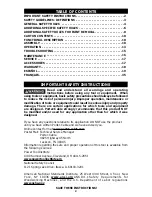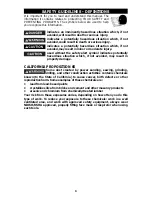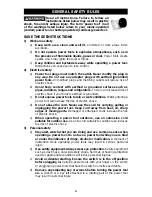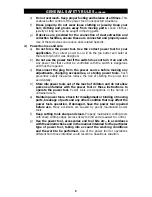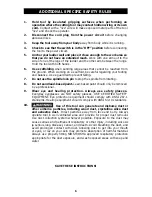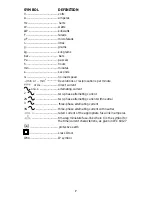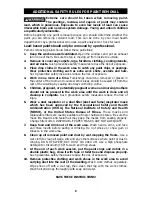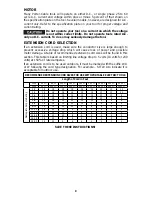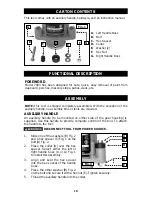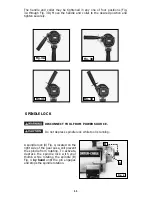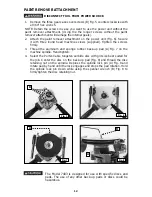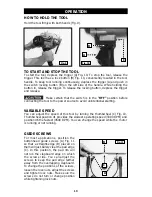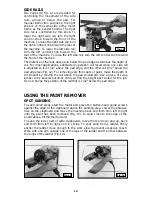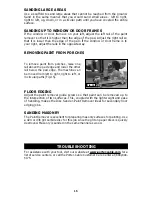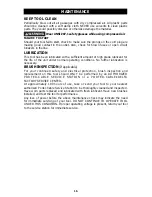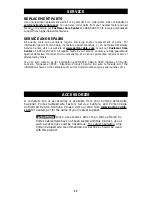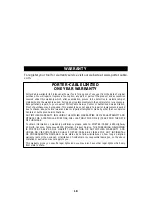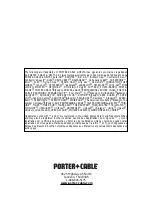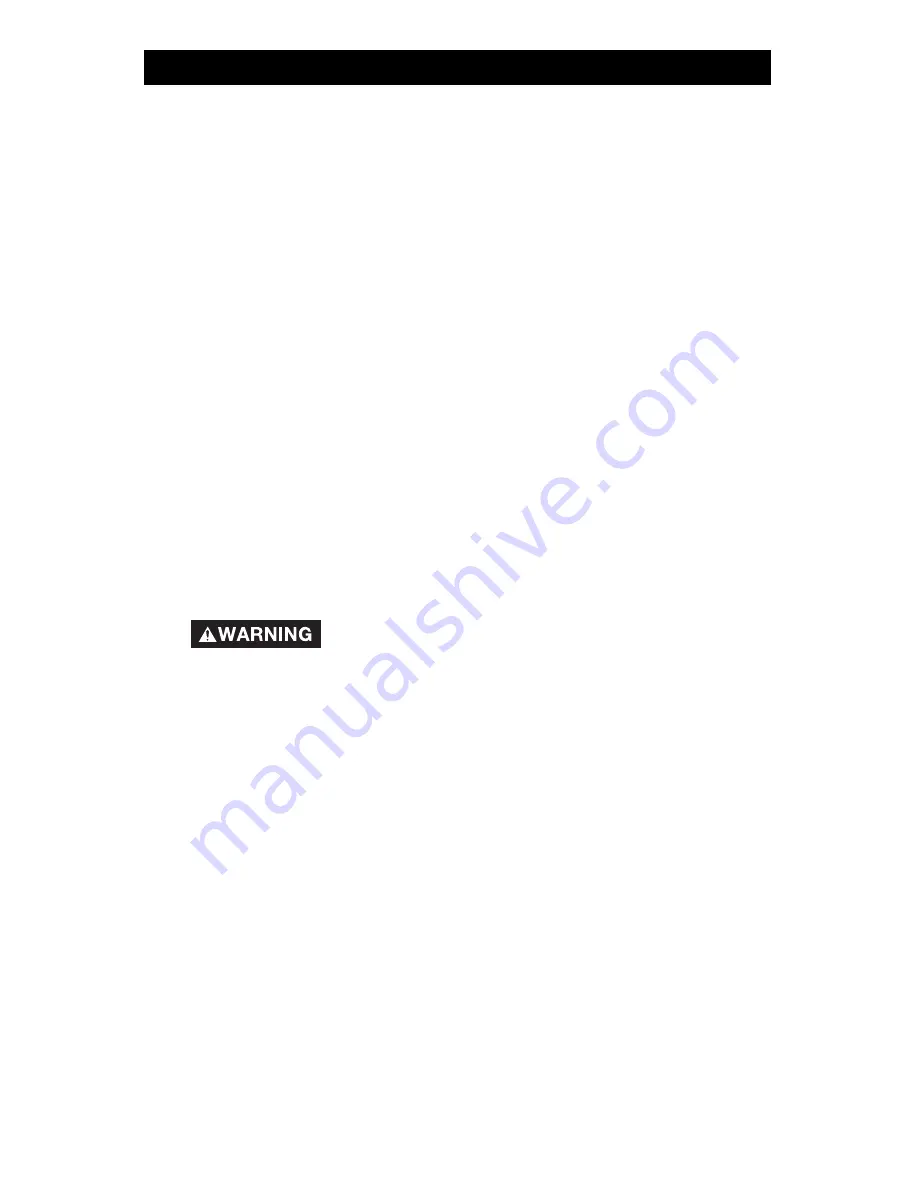
6
ADDITIONAL SPECIFIC SAFETY RULES
SAVE THESE INSTRUCTIONS!
1.
Hold tool by insulated gripping surfaces when performing an
operation where the cutting tool may contact hidden wiring or its own
cord. Contact with a “live” wire will make exposed metal parts of the tool
“live” and shock the operator.
2.
Disconnect the cord plug from the power circuit before changing
abrasive discs.
3.
Keep the tool away from your body away from body while it is running.
4.
Check to see that the switch is in the “OFF” position before connecting
the tool to the power circuit.
5.
Anchor your ladder well and place it close enough to the work area so
that you do not have an extended reach. Work with one arm out to the
side of one of the legs of the ladder and the other arm between the rungs.
Hold the tool with both hands.
6. Use
scaffolding
when sanding large areas that cannot be reached from
the ground. When working on a scaffold, be careful regarding your footing
and balance. Use a guardrail to prevent falling.
7.
Do not use the spindle lock pin to stop the spindle from rotating.
8.
Do not sand lead-based paint. Lead-based paint should only be removed
by a professional.
9.
Wear eye and hearing protection. Always use safety glasses.
Everyday eyeglasses are NOT safety glasses. USE CERTIFIED SAFETY
EQUIPMENT. Eye protection equipment should comply with ANSI Z87.1
standards. Hearing equipment should comply with ANSI S3.19 standards
Use of this tool can generate and disburse dust or
other airborne particles, including wood dust, crystalline silica dust
and asbestos dust. Direct particles away from face and body. Always
operate tool in well ventilated area and provide for proper dust removal.
Use dust collection system wherever possible. Exposure to the dust may
cause serious and permanent respiratory or other injury, including silicosis
(a serious lung disease), cancer, and death. Avoid breathing the dust, and
avoid prolonged contact with dust. Allowing dust to get into your mouth
or eyes, or lay on your skin may promote absorption of harmful material.
Always use properly fitting NIOSH/OSHA approved respiratory protection
appropriate for the dust exposure, and wash exposed areas with soap and
water.
10.


